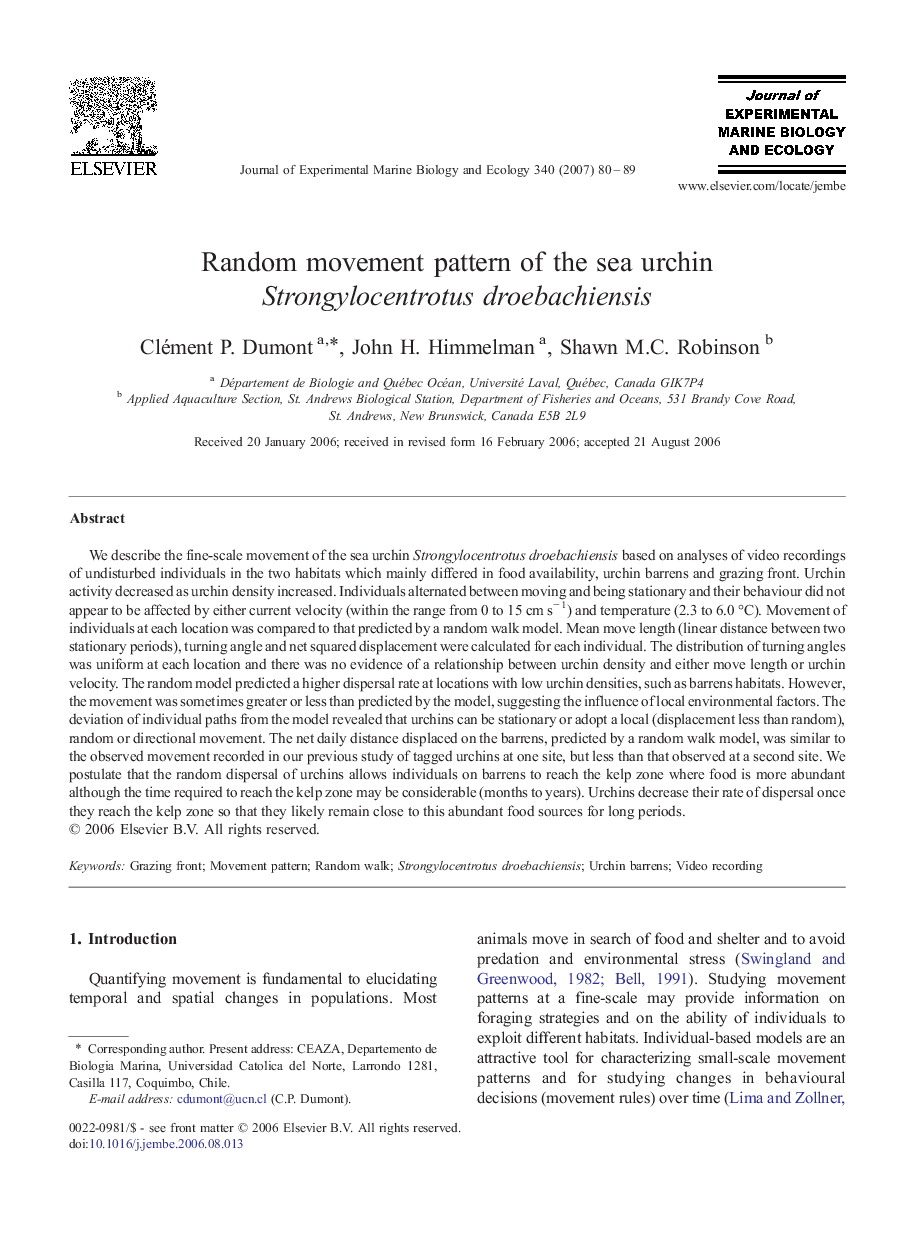| کد مقاله | کد نشریه | سال انتشار | مقاله انگلیسی | نسخه تمام متن |
|---|---|---|---|---|
| 4397940 | 1305915 | 2007 | 10 صفحه PDF | دانلود رایگان |

We describe the fine-scale movement of the sea urchin Strongylocentrotus droebachiensis based on analyses of video recordings of undisturbed individuals in the two habitats which mainly differed in food availability, urchin barrens and grazing front. Urchin activity decreased as urchin density increased. Individuals alternated between moving and being stationary and their behaviour did not appear to be affected by either current velocity (within the range from 0 to 15 cm s− 1) and temperature (2.3 to 6.0 °C). Movement of individuals at each location was compared to that predicted by a random walk model. Mean move length (linear distance between two stationary periods), turning angle and net squared displacement were calculated for each individual. The distribution of turning angles was uniform at each location and there was no evidence of a relationship between urchin density and either move length or urchin velocity. The random model predicted a higher dispersal rate at locations with low urchin densities, such as barrens habitats. However, the movement was sometimes greater or less than predicted by the model, suggesting the influence of local environmental factors. The deviation of individual paths from the model revealed that urchins can be stationary or adopt a local (displacement less than random), random or directional movement. The net daily distance displaced on the barrens, predicted by a random walk model, was similar to the observed movement recorded in our previous study of tagged urchins at one site, but less than that observed at a second site. We postulate that the random dispersal of urchins allows individuals on barrens to reach the kelp zone where food is more abundant although the time required to reach the kelp zone may be considerable (months to years). Urchins decrease their rate of dispersal once they reach the kelp zone so that they likely remain close to this abundant food sources for long periods.
Journal: Journal of Experimental Marine Biology and Ecology - Volume 340, Issue 1, 2 January 2007, Pages 80–89